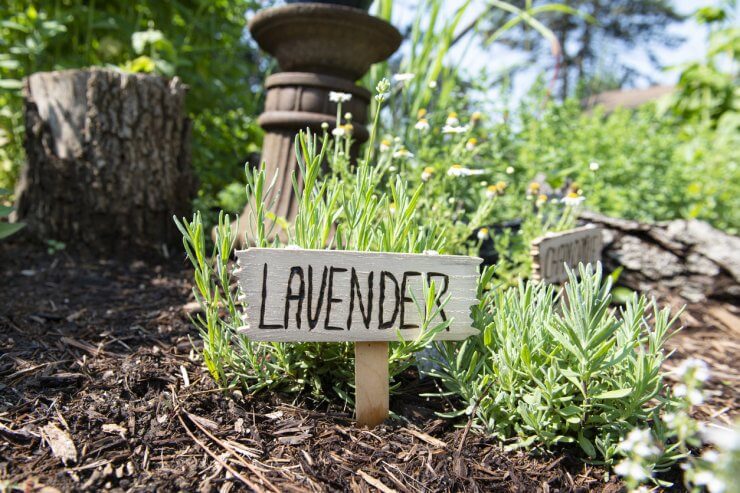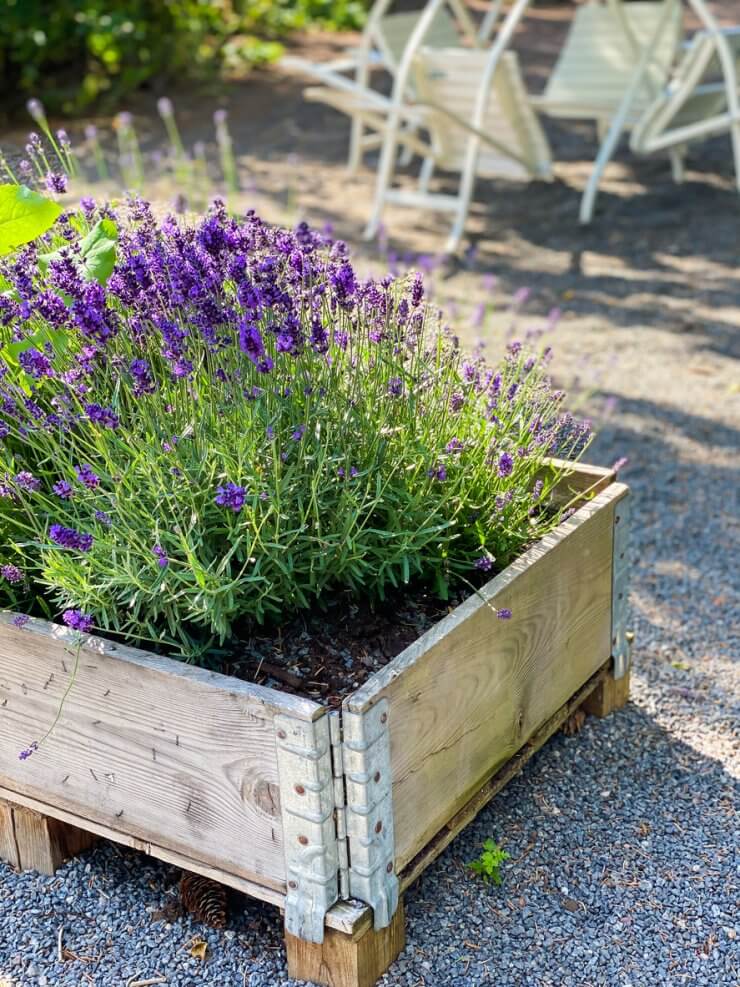
Lavender growing in the ground
Planting
The easiest way to plant lavender is to get healthy plants from a reliable source and plunk them in the ground. They’ll establish themselves quickly and will likely start producing flowers their first year.
You can start lavender from seed, but there are a number of obstacles:
- Lavender seeds tend to have a low germination rate and a long germination time.
- Lavender seeds are very tiny and awkward to handle.
- Even if your lavender seeds do germinate, seedlings are susceptible to root rot if they’re overwatered.
If you have a friend with healthy lavender plants, you can ask for some cuttings. Take them home and root them yourself—it’s easy. Some gardeners have had success just pulling off stems and sticking them into some well-draining soil. It doesn’t get much easier than that!
The big thing to remember is that less is more. Don’t overdo it on the watering. Lavender actual thrives on a little neglect. So once you have it established, you can ignore it from time to time without any gardener’s guilt.
Plant Spacing
Whether you’re planting seedlings or cuttings, keep in mind that lavender is a perennial and it’s going to grow where it’s planted—and grow, and grow. When you get your lavender plant, check for the width of the spread and plant your plants accordingly.
Some dwarf varieties only grow to about a foot tall—a few top off under a foot, and their spread is about a foot. If your lavender plant has a mature spread of 1 to 2 feet, plant those varieties 18 to 24 inches apart. If your lavender plants are a larger variety with a spread of 2 to 3 feet, plant them 2 to 3 feet apart. Because each variety is a little different, be sure to consult the specific instructions for your lavender. If you’re planning to plant lavender for both culinary and landscape purposes—say, as a hedge—you should talk with someone at your local extension center, your local nursery, or the company from whom you are getting your lavender plants.
If you’re planting rows of lavender, you should plan for the rows to be about 1 to 2 feet apart. Again, it depends in part on the variety you’re growing. At the very least, you want some room to maneuver between the rows so you can harvest the stems when they’re ready.
If you’re just starting out with lavender and you’re planting a row, you can fill in that open space for the spring and summer with some annual flowers in between your lavender plants—echinacea, yarrow, sedum, African daisy, zinnia, and gaillardia look good with lavender.
Companion Planting
Companion planting matches plants with soil and nutrient needs different enough that they help, rather than hinder, the growth of both plants.
Here are some good companion plants to go with your lavender. While there are some lovely flowers that grow well with lavender, we’re sticking with companion herbs to help you expand your food garden:
- Alliums (garlic, onion, leeks, chives)
- Brassicas (broccoli, Brussels sprouts, cabbage, cauliflower, kale)
- Oregano
- Rosemary
- Sage
- Thyme
What not to plant with your lavender:
- Garden vegetables that need a lot of water (lettuce, beans, beets, carrots, cucumbers, peas, peppers, squash, etc.)
- Mint (even though they are from the same family, mint needs a lot more water)
Good companion plants can help attract beneficial insects and deter pests, from small insects to hungry herbivorous mammals like rabbits and deer. Luckily, deer don’t really like the taste of lavender, so you’re safe on that front.
Raised beds

Lavender growing in a raised bed
A raised garden bed or planter is an excellent option for growing lavender if you don’t have soil that’s ideal for lavender (heavy clay soil, for example). Raised beds also help with drainage, which is essential for healthy lavender plants. You can buy raised beds or build one yourself to fit your space. Planters should have holes in the bottom of the container and a drip tray underneath to guard against overwatering.
Watering and weeding will be easier if you have your lavender in a raised bed or planter. It’s a good alternative to growing in open land. And if you fill a raised bed with packaged garden soil, you know you’re providing a cleaner and healthier environment for your plants from the outset. Just make sure the soil has a bit of sand or other lightener in it to keep it from holding too much moisture.
Packaged garden soil means less weeding than you’d have from digging a hole in the ground; and with a raised bed or container, there’s less bending down to do your weeding!
How do you plant your lavender? What criteria for site selection has worked for you? Do you use your lavender as companion plants? Please share your ideas with us.


 Previous
Previous

